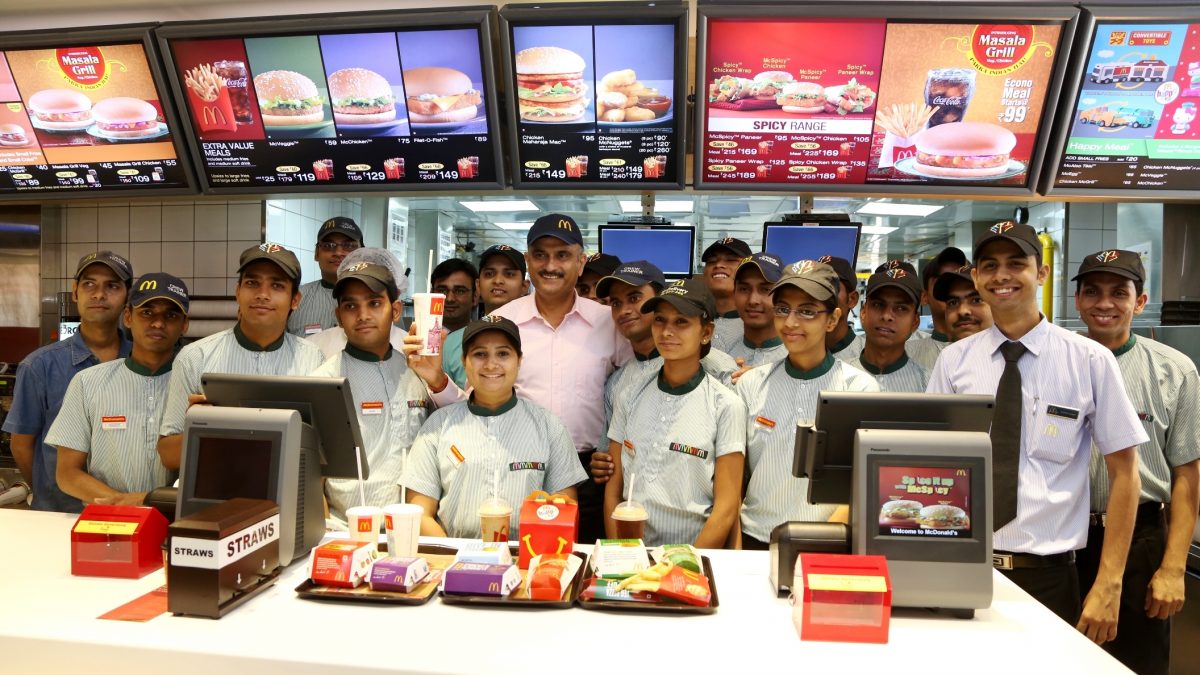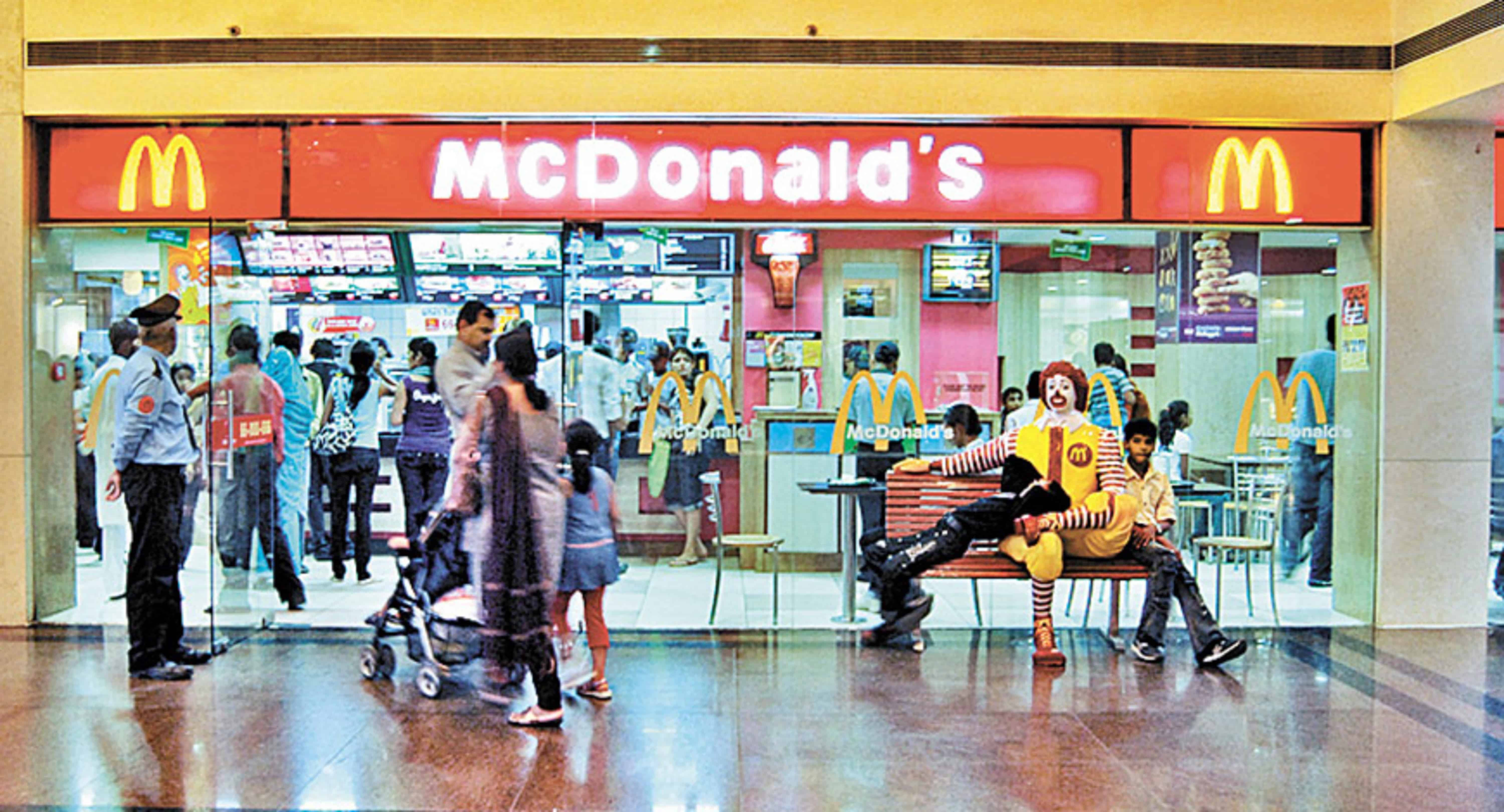
What’s So Good about the Pricing Strategy of McDonald’s 🍔 India?
The pricing strategy in Mcdonald’s India is so different from other countries. Can a popular American franchise like McDonald’s really serve burgers to a country that’s pretty much vegetarian?
>Download Now: Free PDF How to Drive Pricing Strategy to Maximise EBIT Growth
Will culture and religion be surmountable challenges for this fast-food giant or will they find their costs spiralling out of control as they build their business in a totally different market?
In this article, we will take a close look at how McDonald’s is currently building its franchise in India. Also, we will share with you the pricing strategy of McDonald’s in India. In addition, we’ll look at how the fast-food giant is competing with local traditions, cultural differences and existing competition to establish their global McDonald’s brand.
How McDonald’s Entered India
Amit Jatia is the man behind the phenomenal growth of McDonald’s in India.
In 1994, the American fast-food giant first contacted him persuading his vegetarian family to invest in the business.
Amit said that he and his family had to think about it carefully since nearly half of Indians are vegetarians. They were only convinced to invest when McDonald’s told them that they are willing to localise. They assured them that there would be no pork or beef on the menu.
McDonald’s signature product is Big Mac beef burger which is known across the world. Considering that India will not serve beef or pork as 80% of the population revere cows as sacred. They came up with their own signature product which is the mutton-based Maharajah Mac as opposed to its famous beef-based Big Mac.
There were challenges in entering the market. Based on McDonald’s survey on the Indian market, they learned that Indians wanted to try and taste American fast food, however, it should not be a replacement for their food. Therefore, McDonald’s need to adapt to Indian taste if they want to succeed in India. They had to customize their burgers to suit Indians’ taste and a hyper price-sensitive market. Another thing was that half of its population is vegetarian, a separate menu had to be created or served.

Localisation and Competition against the traditional street vendors
Competition against street vendors
There is plenty of existing competition in the Indian fast food space. McDonald’s has had to compete with a range of alternatives to maintain control of the Indian market. India’s street food, for example, has many forms and varieties, and it’s very popular amongst Indian people.
Generally speaking, though, when a fast-food chain gives Indians what they want (listed above), they do quite well in India, both in financial terms as well as in popularising its quick service culture among the population.
Fast food is very popular in India. What’s more, India’s fast food industry is growing quickly. It’s now at 40% per annum, generating over Rs. 4800 cores in sales and over Rs. 7000 cores in multinational segments.
There are also unique varieties of fast food in different states of India which can be difficult to serve well and are generally much cheaper than a McDonald’s meal. For example, the most authentic cuisine is Indian street food and can be bought for a few rupees from portable stalls found in the Indian cities and towns.
Street vendors are a serious competitor to McDonald’s in India. Street vendors offer hot fresh, enticing snacks which many people really enjoy and prefer. These street foods are popular mainly because they are available at half the price of any restaurant food, including McDonald’s.
Take-out food, fast food, and snacks are easily available which is another factor undermining McDonald’s convenience offer. It doesn’t take much time to prepare street food either, so vendors present a very convenient and tasty eating option.
Localisation
Amit confessed that McDonald’s adapting for the uniquely Indian market was expensive, however, it has paid off in the long term.
There was no supply chain for lettuce in India when they were just starting. Many people used cabbage instead of lettuce on burgers. So, they had to start from the very beginning.
They introduced a burger called Aloo Tikki Burger for 20 rupees (20p). It is made with a cutlet of mashed potatoes, peas and seasoned with Indian spices. This is McDonald’s India version of street food. It was a hit – with the taste, value and price they introduced to the market. It radically changed India’s industry.
Says Edward Dixon, chief operating officer of Sannam S4, that provides market entry advice and support (for multinationals in India, Brazil and China):
“Localised menu, delivered with precision quality at a price that works. One other trick they have used very effectively [is] an entry level ice cream which fuels the ability for consumers who might not ordinarily be able to afford to become a customer.”
In 2001, they began to localise all the kitchen equipment to make a burger. They had to take a burger apart, piece by piece and made every component local. Even the furnitures, chillers, freezers and refrigeration are made locally. Their global suppliers have worked with local businesses in most cases to make that happen.
Moreover, India demands that McDonald’s offers vegetable products which are 100% vegetarian. They want McDonald’s to abide by strict food preparation requirements and a vegetarian menu. This includes:
- different food groups to be prepared separately using dedicated equipment and utensils
- cooking oils that are strictly vegetarian oils – not animal-based oils
- cheese and sauces that are completely vegetarian and egg-less
Diversified Product Range
McDonald’s India has a diversity of product range focusing on vegetarian products because most Indians are vegetarian. They introduced several products that are spicy and tasty according to Indians’ preference since they like spicy foods.
To accommodate vegetarian customers, they came up with vegetarian products like McVeggie burger and McAloo Tikki. They separated the vegetarian and non-vegetarian sections, making sure that this is maintained throughout the various stages. To build confidence, they even take customers on kitchen tours. Hardcore vegetarians do not enter places where non-vegetarian food is served.
Evidently, McDonald’s India is committed to its customers by developing special sauces that only use local spices and chillies. Even the mayonnaise and the rest of their sauces are egg-less. McDonald’s wide variety of menu includes McAloo Tikki, Spicy Range, Fillet-O- Fish, Chicken McGrill, Chicken Mcnuggets, Veg Pizza McPuff, McVeggie, Wraps, Fries, an assortment of Sundaes, Soft Serve and refreshing beverages such as Ice Tea & Cold. They strengthened the branded affordability mantra by introducing the Happy Price Menu which starts at Rs 25 only.
McDonald’s India classified its products into 2 categories to satisfy consumers with different price perceptions. These are:
- branded affordability (BA) – products include McAloo Tikki and Chicken McGrill burgers that cost Rs20-30.
- branded core value products (BCV) – products include the McVeggie and McChicken burgers that cost Rs 50-60
McDonald’s Pricing Strategy
McDonald’s uses the pricing approach, ‘think global, act local’. They have proven to be affluent at using cost leadership pricing strategy by offering meals at low prices.
Prices were kept low by:
- employing and training employees that are inexperienced instead of trained cooks
- employing a few trained managers only
They also use price bundling matched with psychological pricing. For price bundling, meals and other product bundles are offered for a discount. Such as combo meal, family meal, happy meal, and happy price menu. The reason is to improve the total sales of the service and product. For psychological pricing, they use prices that appear to be more affordable, like $__.99 instead of using the whole dollar amount. The strategy is to gain customers and make them buy more products.
Regardless of the standardization being a characteristic of cost savings, execution of McDonald’s price strategy is localised rather than internationalised.
Each country is subjected to a strict process to determine the price for a specific market. The process below is the basic structure that McDonald’s uses to create localised pricing:
- Selecting the price objective. It depends on its business aims to gain market share in cost calculation and global pricing strategy.
- Determining demand. The determination if the demand for the product is significant enough to invest in the venture.
- Estimating costs. The balance of fixed and/or variable costs vs. the expected profits from the business venture.
- Analysing competitors costs, prices and offers. A local survey, business planning and detailed market research conducted. It determines if there is still room for another player entering the business market.
- Selecting the pricing method. It includes the list price, the discount levels and tactics available to teams, as well as the financial options available, etc. The part of the marketing strategy that generates revenue. The price must also take into consideration the appropriate demand-supply equation.
- Selecting the final price. The price determined by the pricing team that is fair to both the business and the public. For example, the team may use value pricing to determine the final invoice price.
Just like most of the companies’ pricing objectives, McDonald’s also aims to increase market share. Its mission statement highlights its pricing policy which says:
“Being in touch with the price of our competitors allows us to price our products correctly, balancing quality and value.”
For example, in 1996, to penetrate the market in New Delhi, McDonald’s set their price by studying a local food chain (Nirula).
McDonald’s pricing decision involves analysing of demand, competitor pricing, costs, a product’s life-cycle and balancing quality with value.
Back in September 2009, McDonald’s reduced its menu prices by almost 25% specifically for its lunch and dinner. McVeggie and McChicken also decreased to Rs. 85 from Rs. 110 and 120 respectively. Lowering prices in such times was surprising and did not make sense. However, the management in India believed that adjusting its menu prices would help customers choose McDonald’s as a lunch and dining destination as well.
McDonald’s India’s Success
By mid-2000, McDonald’s got its 50% revenue from vegetable food items. They proved that they can survive and become successful in a vegetarian country. McDonald’s was also emulating a three-pronged strategy: increase seating capacity to accommodate more customers; open new outlets in Mumbai and Delhi; penetrate new cities.
In 2003, McDonald’s India became one of McDonald’s top ten operations when it comes to average transactions per day in each outlet. Its average transactions per day — 1,500.
The major reasons for McDonald’s India’s success:
- System – they had an effective and efficient system in place that exploited the minimum wage labour available; they employed young teenagers who are just looking to make some money and get basic job skills
- Convenience – their store is everywhere; found in major shopping centres, district, freeway, highway, and at almost every corner
- Familiarity – the associations with the Golden Arches, the Big M, Ronald McDonald, happiness and fun
- Menu – they have the most diverse menus; it targets all ages from kids, middle-aged to grandfathers/mothers
McDonald’s understood the problems and opportunities of the Indian market well. It adapted to its products and has been successful since. Its success shows in its continuous growth in the fast-food market with 400 branches all over India.
Implications
- McDonald’s evolved Indian menus, Indian sensitivities and yet remain as globally innovative as ever.
- At McDonald’s India, the single mantra driving their vision is providing 100% total customer satisfaction. The formula to achieve this goal is based on the long-standing commitment to the McDonald’s Promise.
- Being in touch with the price of their competitors allows McDonald’s India to price the products correctly, balancing quality and value.
- Regardless of the long and established street food tradition in India that has also become McDonald’s competitors, McDonald’s did not back out but instead doubled its efforts to build its position and keep on competing and growing each day. They’ve learned to adapt and to cater their menu to people’s local tastes and preferences.
〉〉〉 Get Your FREE Pricing Audit 〉〉〉
Conclusion
- The fast-food industry in India has evolved with the changing lifestyles of the young Indian population. The sheer variety of gastronomic preferences across regions – hereditary or acquired – has brought about different modules across the country. It may take some time for the local enterprise to mature to the level of international players in the field.
- McDonald’s implemented successfully its cost leadership marketing strategy, its overall objective is to increase market share.
- Arriving at a pricing decision is large as a result of analysing demand, costs, competitor pricing. They also consider metrics such as product’s life-cycle to balance quality with value.
- Other than the cost of living, certain elements such as geographical factors, government regulations, economic climate and exchange rate also affect the pricing strategy of McDonald’s in India.
Click here to access your free pdf guide on driving pricing strategy in your business.
If you would like to learn more about global pricing strategy, download our free pricing guide or e-book now.
For a comprehensive view on maximising growth in your company,
Download a complimentary whitepaper on How To Drive Pricing Strategy To Maximise EBIT Growth.
Are you a business in need of help to align your pricing strategy, people and operations to deliver an immediate impact on profit?
If so, please call (+61) 2 9000 1115.
You can also email us at team@taylorwells.com.au if you have any further questions.
Make your pricing world-class!
Related Posts
Leave a Reply Cancel reply
Categories
- marketing strategy (26)
- Organisational Design (14)
- Podcast (114)
- Pricing Capability (87)
- Pricing Career Advice (10)
- Pricing Recruitment (19)
- Pricing Strategy (291)
- Pricing Team Skills (13)
- Pricing Teams & Culture (25)
- Pricing Transformation (47)
- Revenue Model (25)
- Sales Effectiveness (27)
- Talent Management (7)
- Technical Pricing Skills (35)






